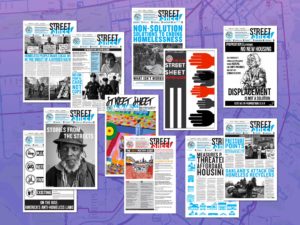by Andrew Khakali
When Same was a child, they didn’t see any difference between them and their mostly white preschool mates. Like all children, they simply enjoyed the company of other people, and saw them as either nice or mean based on the way that person treated them. How they felt about others had nothing to do with race, who their parents were, how wealthy their family was or anything else. They accepted their playmates as individuals.
With time, Same’s perspective changed. Same realized that they had a different skin color than their playmates, and that their parents looked different from their playmates’ parents. It still didn’t mean anything significant to them, but they recognized the differences. When they moved into high school and then college, they became more concerned with the issues that other Black people faced in San Francisco. For Same, the present problems Black people face became a much greater source of unease and concern.
U.S. Census data from 2022 shows the number of people in the U.S., age range, their racial makeup, income and employment. According to this survey, the Black population makes up about 14% of the total U.S. population. Census data also shows that Black people are paid less than any other large racial group and have less access to higher education. While the population in the United States is growing, the Black population is not growing compared to other groups.
Incarceration, homelessness, poverty, and drug addiction affect every race and ethnicity, but when these issues fall disproportionately on Black people it becomes an even more serious problem. The Black community has a difficult legacy in San Francisco. Many people in this community have ancestors who came to the United states as slaves. Thus, racism has always been inherent in the structure of American society. Unfortunately, this has led to contemporary issues which deserve an immediate solution.
For instance, the politics around accessing adequate healthcare is a concern for many Black people, especially those living in urban areas. This is due to inadequate funding resources and the degradation of hospitals in these areas. Many hospitals relocate to suburban areas which means longer travel time for Black people in cities who are in need of care.
Black people are also disproportionately plagued with COVID- 19, hypertension, stroke, HIV and heart diseases among other ailments. Health care is so expensive that many people simply can’t afford proper treatments, and high food prices make good nutrition inaccessible as well. This is made possible by the systems put in place not to favor the Black population.
Racism is also a serious problem within the legal system. Arrests and incarceration rates are higher among Blacks than any other group. It may seem to some people that this is due to some flaw in the group as a whole, but that is not borne out by the statistics. A Black person is six times more likely to face jail time for a drug or a traffic offense than a white individual, even if it is the same kind of offense. Although Black people comprise only 14% of the total population in America, they make up more than half of the prison population. Racial profiling and police brutality against Black people is also a concern.
The system has been designed to harm Black people. Our laws demean Black people, create barriers to even simple tasks such as visa renewals, and try to paint innocent people as guilty. These are political issues facing black San Franciscans today.

